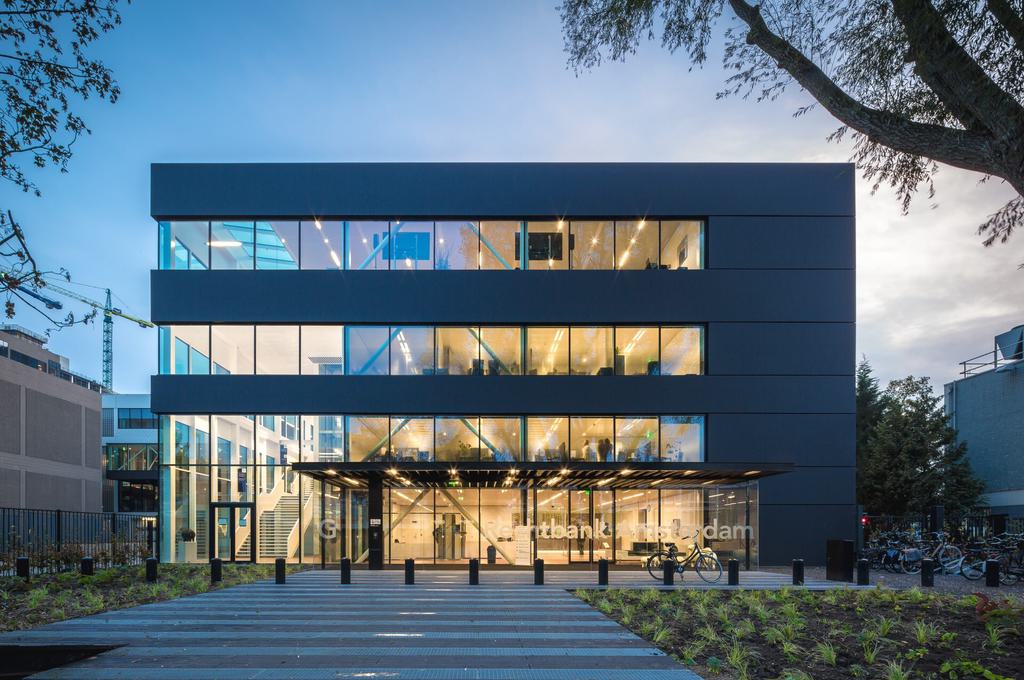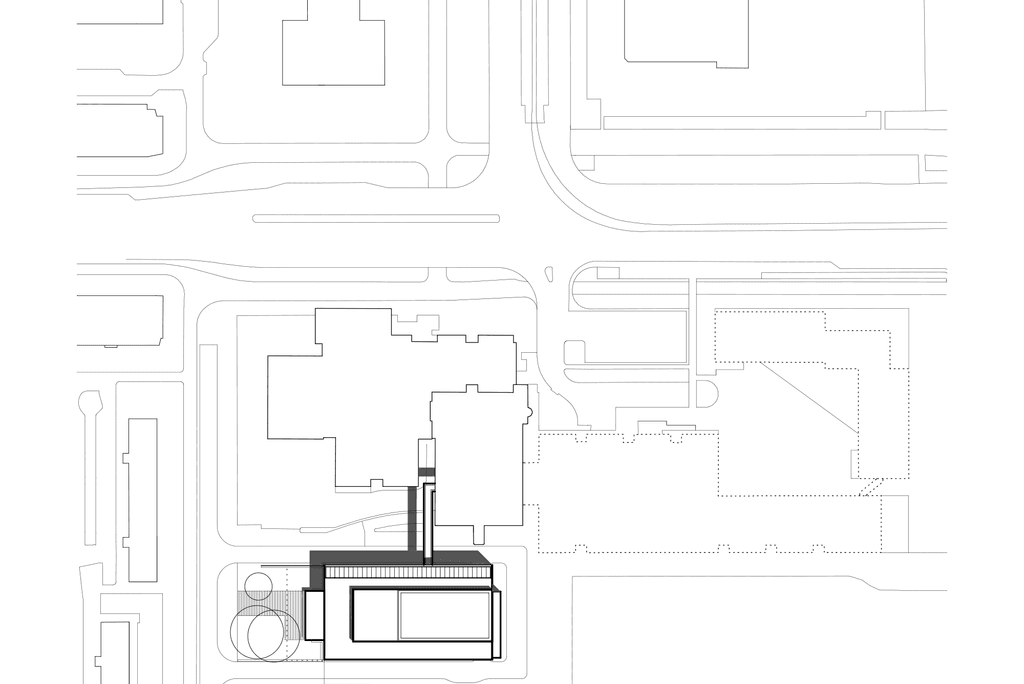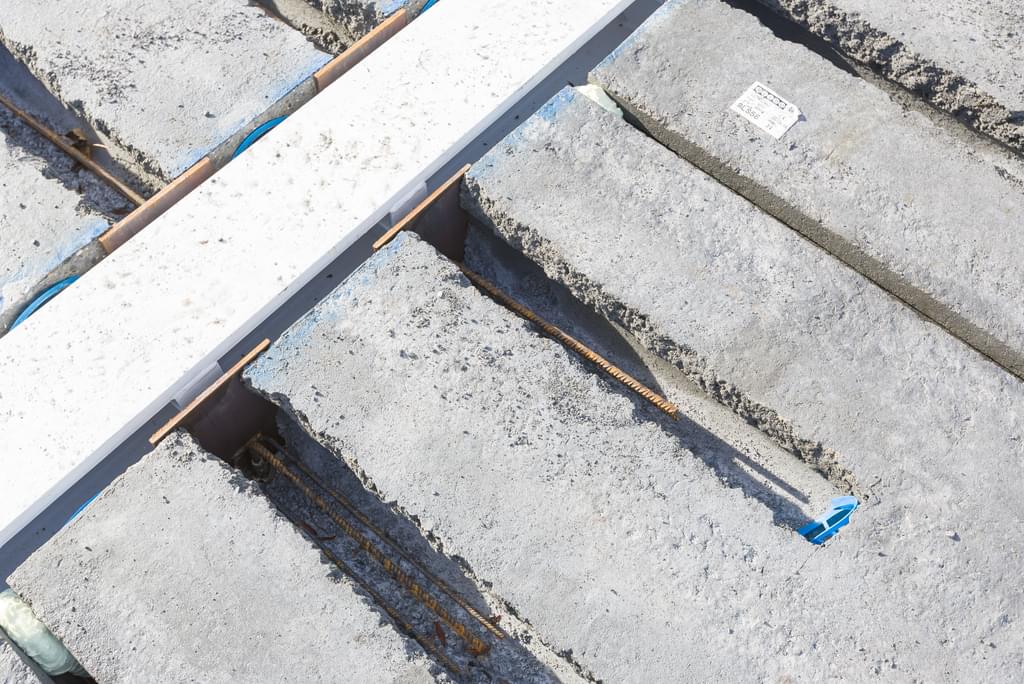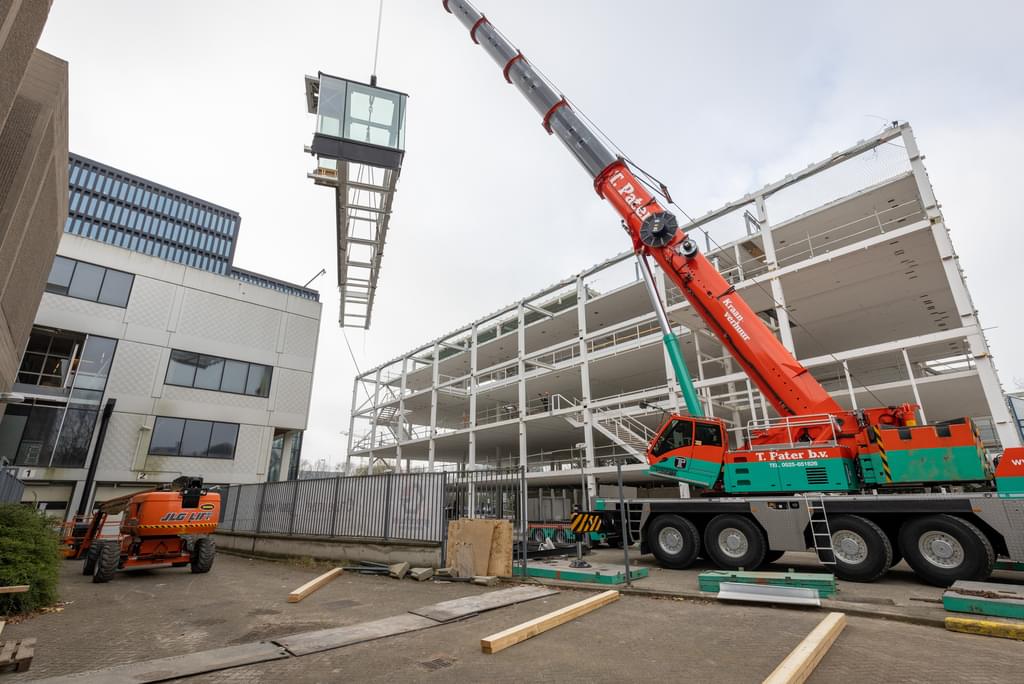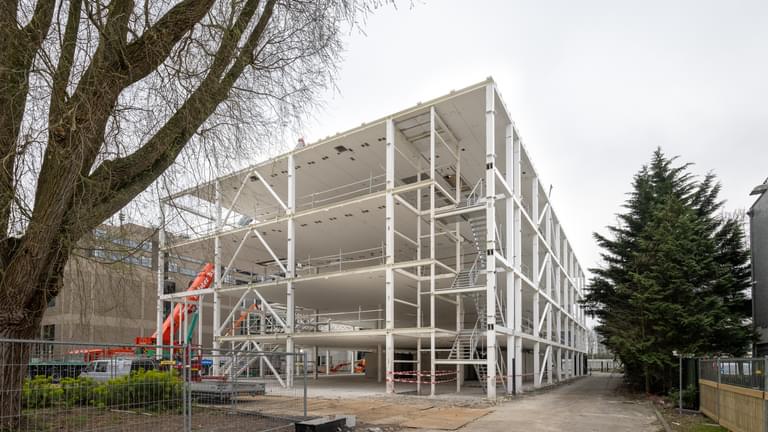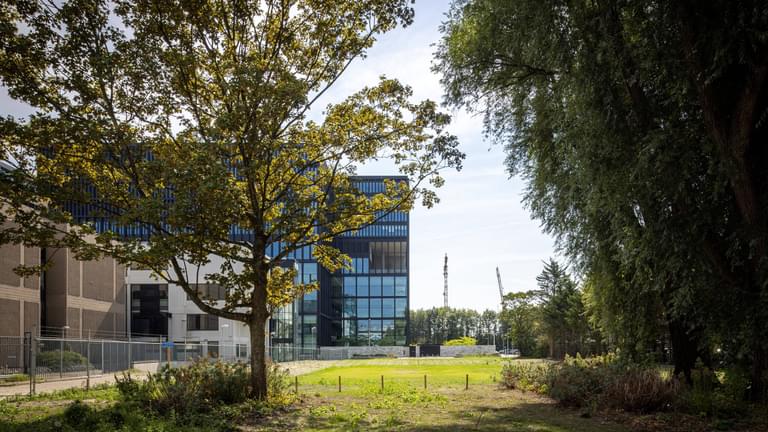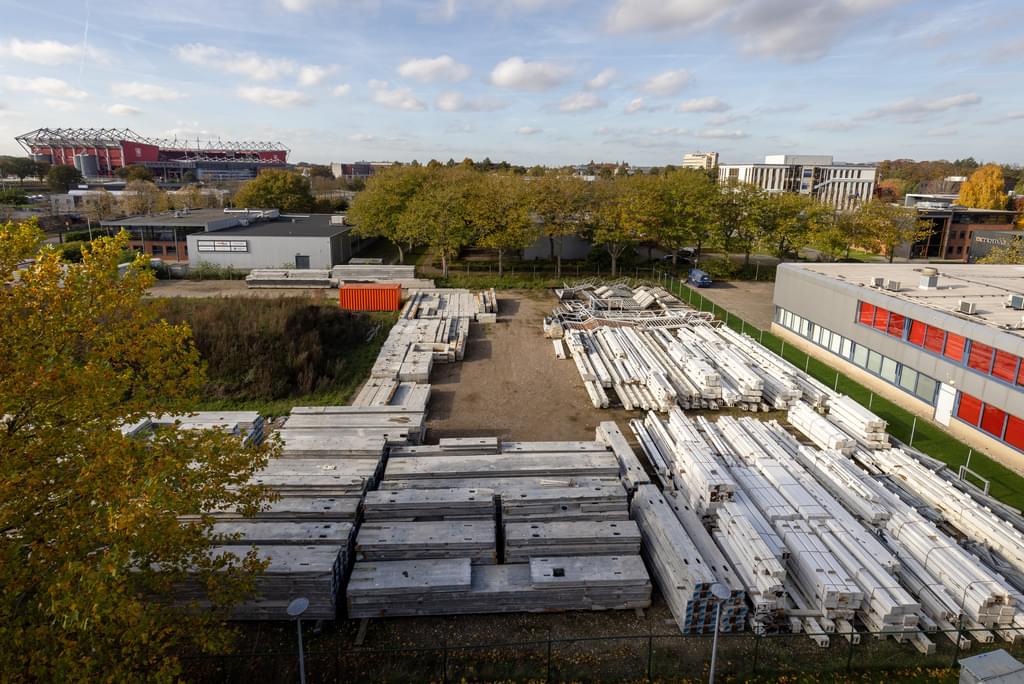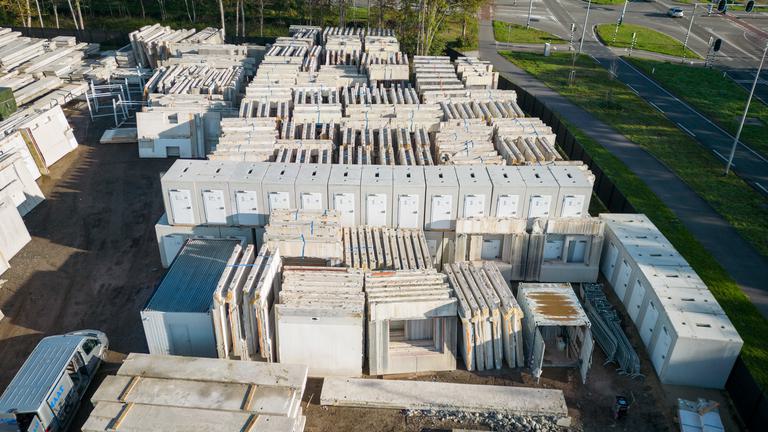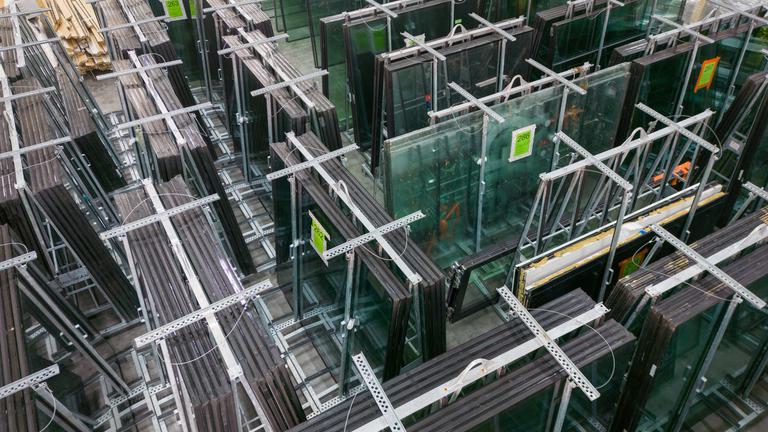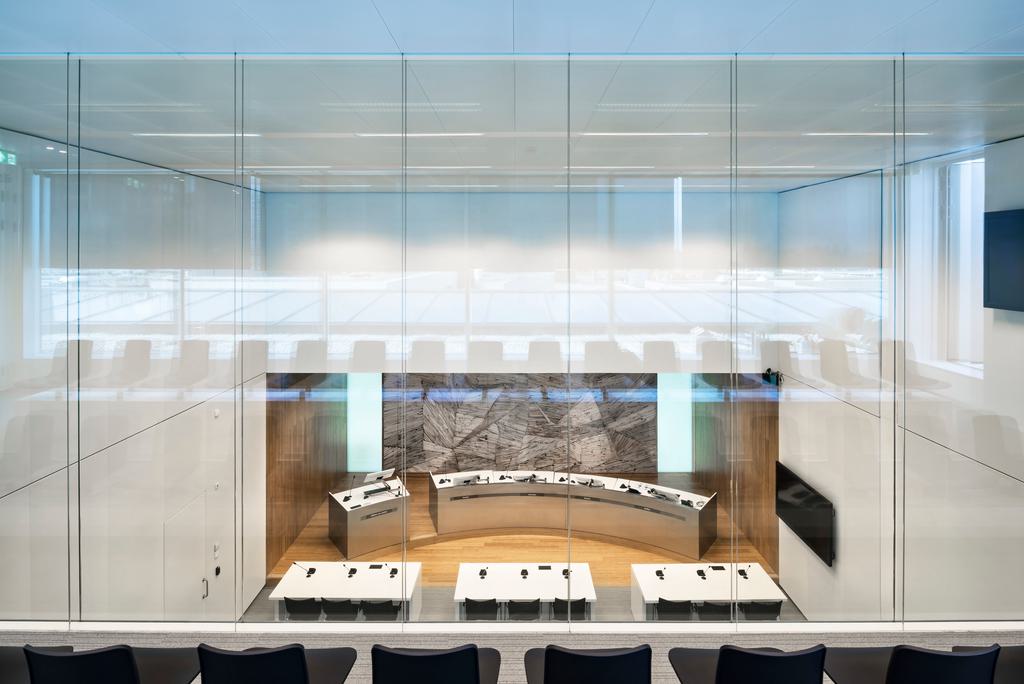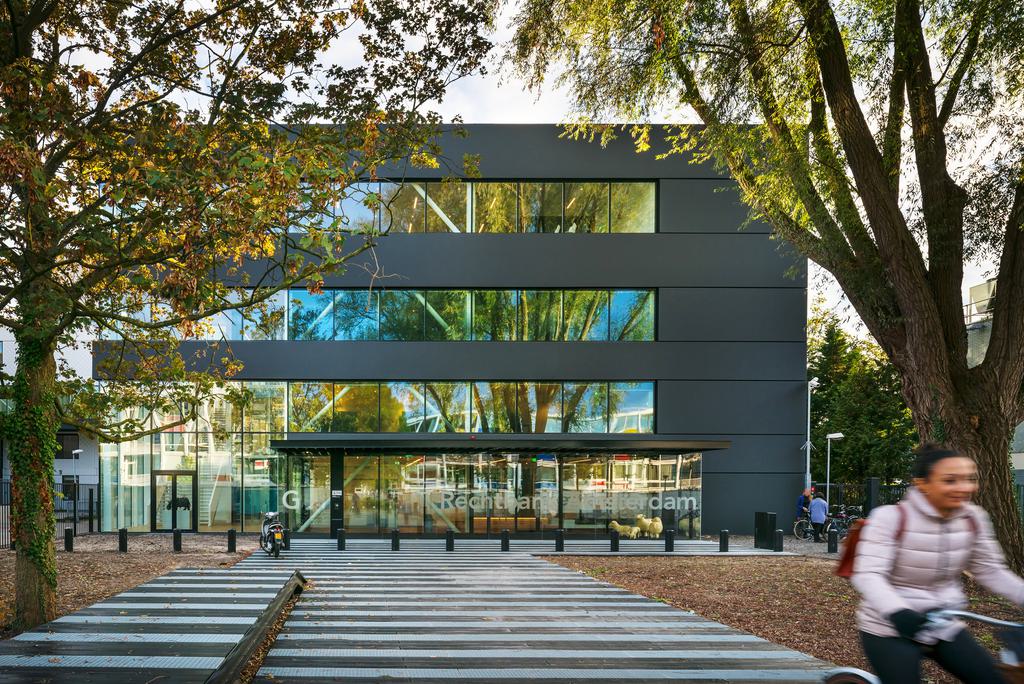phase 1 | court at parnassusweg
Between 2016-2021, the Amsterdam District Court needs a temporary home on Parnassusweg. Between 2016-2021, the Amsterdam District Court needs a temporary home on Parnassusweg. Large-scale new construction is planned, plus renovation of one of the two existing buildings - the other will be demolished. The 'temporary court' functions as the new main entrance to the Amsterdam Court and is connected by a footbridge to the existing building which will remain in use.
The building of the temporary court meets the request of the Rijksvastgoedbedrijf in all aspects. It is representative and comfortable. It guarantees the safety of staff and visitors and, despite its very different functions and complex user flows, has a logical layout. Moreover, it minimises material waste because almost everything is reused.
The detachable components are thoroughly circular. They are designed in detail with high-quality new material and all components are mapped. So not only can the building be easily assembled, it is also easy to disassemble after five years of use. Then, like a construction kit, it can 'travel' to be reassembled elsewhere, in parts or as a whole.
